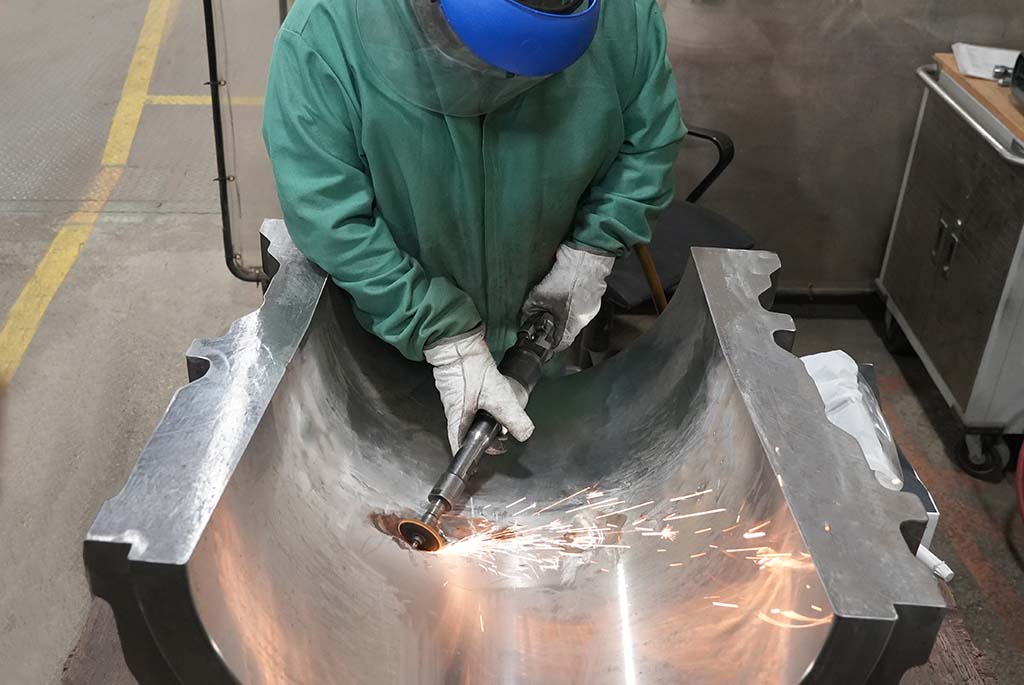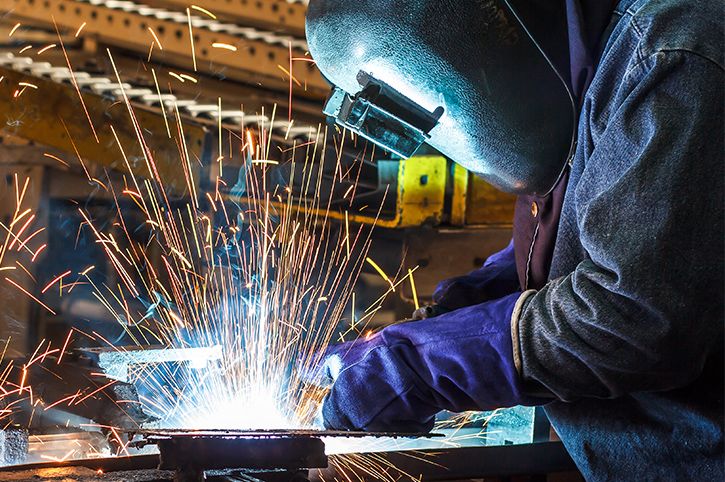Usual Welding Repair Service Issues and Exactly How to Address Them Efficiently
Welding repair services usually run into a series of concerns that can jeopardize the honesty of the end product. Common troubles consist of inadequate infiltration, porosity, and misalignment, amongst others. Each problem provides distinct challenges that need specific approaches for resolution. Comprehending these concerns is essential for welders intending to enhance their abilities and end results. This conversation will explore these common welding fixing issues and effective methods to resolve them.
Insufficient Infiltration
Insufficient infiltration occurs when the weld steel stops working to completely fuse with the base material, causing weak joints and possible structural failings. This issue commonly originates from not enough warmth input, inaccurate electrode angle, or incorrect welding rate. Welders might experience insufficient infiltration as a result of a miscalculation of the essential parameters for a certain material density or type. Additionally, contamination on the base product's surface area can impede reliable bonding, intensifying the issue. To resolve insufficient infiltration, welders should ensure ideal setups on their tools and preserve a tidy work surface area. Regular examination of welds is recommended to determine any shortages early, enabling for timely modifications and the avoidance of compromised structural integrity in welded settings up.
Porosity
Porosity is a typical problem in welded joints that manifests as tiny gas bubbles trapped within the weld metal. This flaw can jeopardize the integrity of the weld, resulting in minimized strength and prospective failure under stress and anxiety. Welding. Porosity usually develops from contamination, dampness, or incorrect welding strategies, which permit gases to leave right into the molten weld swimming pool. To resolve porosity, welders need to ensure appropriate surface area preparation, maintain a tidy workplace, and utilize ideal welding criteria. Furthermore, choosing the right filler material and shielding gas can reduce gas entrapment. Regular inspection and testing of welds can assist recognize porosity early, ensuring timely rehabilitative activities are taken, thereby maintaining the top quality and dependability of the welded framework
Imbalance
Imbalance in welding can arise from numerous aspects, consisting of inappropriate arrangement and thermal growth. Comprehending the origin is essential for efficient resolution. A number of correction techniques are offered to realign parts and ensure structural honesty.
Reasons for Misalignment
Welding imbalance often originates from a range of underlying concerns that can compromise architectural honesty. One primary cause is improper fit-up of parts prior to welding, which can lead to gaps and uneven surfaces. Variants in thermal growth during the welding procedure can additionally lead to distortion, specifically if the products being joined have different coefficients of development. Additionally, poor clamping and fixturing may fall short to hold elements firmly in place, bring about motion throughout welding. Improperly maintained tools, consisting of welding devices and tools, may present incongruities in the weld bead, more adding to imbalance. Driver error, stemming from insufficient training or experience, can likewise play a substantial role in creating misaligned welds.

Improvement Methods Readily Available
Resolving misalignment effectively requires a combination of rehabilitative techniques customized to the particular problems handy. One common technique is making use of components or jigs to hold parts in the correct placement during welding, making sure consistent positioning. In addition, pre-heating the products can help in reducing distortion and improve fit-up. For significant misalignment, mechanical adjustment methods, such as using hydraulic jacks or clamps, can be employed to deal with the placement prior to welding. Post-weld heat treatment might likewise be necessary to relieve tensions brought on by misalignment. Cautious inspection and modification throughout the arrangement phase can prevent misalignment issues from becoming significant problems, advertising a smoother welding process and enhancing overall architectural stability.
Distortion
Distortion is a typical obstacle in welding that can arise from numerous elements, consisting of unequal heating & cooling. Recognizing the sources of distortion is important for implementing reliable prevention techniques. Resolving this concern not only improves architectural honesty but additionally improves the general top quality of the weld.
Reasons of Distortion
When subjected to the extreme warmth of welding, products typically undertake modifications that can lead to distortion. This phenomenon primarily occurs from thermal expansion and contraction throughout the welding procedure. As the weld area warms up, the product increases; upon air conditioning, it gets, which can develop internal tensions. Additionally, unequal heating throughout a workpiece can exacerbate these tensions, leading to bending or flexing. The kind of material additionally plays a substantial role; steels with varying thermal conductivity and coefficients of development may react in a different way, resulting in unforeseeable distortions. Moreover, poor joint style and inadequate fixturing can add to imbalance throughout welding, boosting the probability of distortion. Recognizing these reasons is vital for effective welding repair and avoidance methods.
Prevention Techniques
Efficient prevention methods for distortion during welding concentrate on regulating heat input and guaranteeing appropriate joint style. Maintaining a consistent warm input helps to minimize thermal expansion and tightening, which can lead to distortion. Using techniques such as pre-heating the work surface can likewise reduce the temperature level slope, advertising uniform heating. Furthermore, selecting suitable joint layouts, such as T-joints or lap joints, can enhance stability and reduce anxiety concentrations. Carrying out appropriate fixturing to secure the work surfaces in position further help in maintaining positioning during the welding process. Staggered welding sequences can disperse heat more evenly, stopping localized distortion. By using these methods, welders can considerably reduce the likelihood of distortion and boost the general high quality of their welds.
Splitting
Splitting is a typical concern come across in welding repairs, usually resulting from various elements such as inappropriate air conditioning prices, material selection, or insufficient joint prep work. The occurrence of fractures can greatly jeopardize the honesty of the weld, leading to prospective failings during procedure. To address this issue, welders should first evaluate the source, making certain that products are compatible and appropriately selected for the specific application. In addition, regulating the air conditioning rate throughout the welding process is necessary; quick air conditioning can generate anxiety and cause breaking. Correct joint style and preparation additionally add to reducing the threat. Implementing these approaches can enhance weld top quality and sturdiness, ultimately decreasing the chance of fracturing in completed weldments.

Incomplete Combination
A substantial issue in welding repairs is insufficient blend, which takes place when the weld steel does not appropriately bond with the base product or previous weld passes - Montana Mobile Welding and Repair Fabrication. This issue can result in weak points in the joint, potentially compromising the honesty of the welded structure. Aspects adding to insufficient combination include not enough warm input, incorrect welding technique, and contamination of the surface areas being signed up with. To resolve this problem effectively, welders ought to ensure correct pre-weld cleaning and surface area prep work, along with readjust their welding specifications to attain appropriate infiltration and blend. Routine assessment during the welding process can also help identify insufficient blend early, permitting for prompt restorative actions to improve the total quality of the weld
Overheating
While welding repairs can boost structural stability, overheating presents a substantial challenge that can result in product deterioration. Excessive warm throughout welding can modify the mechanical buildings of steels, leading to lowered strength, my link enhanced brittleness, and warping. This sensation is particularly essential in high-stress applications where architectural dependability is extremely important. Recognizing overheating can involve aesthetic examinations for staining or distortion, along with keeping track of temperature level throughout the welding process. To reduce the threats connected with getting too hot, welders need to utilize ideal strategies, such as controlling heat input, changing traveling speed, and using ideal filler products. In addition, carrying out pre- and post-weld warmth treatments can help bring back product residential or commercial properties and improve the general quality of the repair that site work, making sure long-lasting performance and security.
Frequently Asked Concerns
What Are the Typical Signs of a Welding Issue?

How Can I Examine My Welds for Top quality?
To test welds for top quality, one can use aesthetic assessments, ultrasonic testing, and radiographic approaches. Each technique assures architectural honesty, recognizes defects, and confirms adherence to defined standards, eventually boosting the reliability of the welded joints.
What Safety and security Preventative Measures Should I Take While Welding?
When welding, one need to focus on safety by wearing proper personal protective equipment, guaranteeing appropriate air flow, securing combustible products away, keeping a clean work area, and recognizing environments to stop accidents and injuries.
Can I Repair a Weld Without Redesigning the Entire Joint?
Repairing a weld without redoing the whole joint is feasible, depending upon the damages (Montana Mobile Welding and Repair Fabrication). Techniques such as grinding, adding filler product, or using a welding procedure can effectively attend to specific problems while preserving the bordering structure
What Tools Are Important for Efficient Welding Repair Works?
Essential tools for effective welding repair services consist of a welding device, wire brush, grinder, safety gear, clamps, and filler products. Each device plays a crucial role in ensuring top quality and safety and security throughout the repair work procedure. Porosity generally develops from contamination, dampness, or incorrect welding techniques, which permit gases to leave into the liquified weld swimming pool. Improperly conserved tools, including welding makers and tools, may present inconsistencies in the weld bead, further contributing to imbalance. When subjected to the intense heat of welding, products typically undertake adjustments that can lead to distortion. Cracking go right here is a common issue run into in welding repairs, usually resulting from different factors such as improper air conditioning rates, material choice, or poor joint preparation. A considerable problem in welding fixings is insufficient fusion, which happens when the weld steel does not sufficiently bond with the base product or previous weld passes.